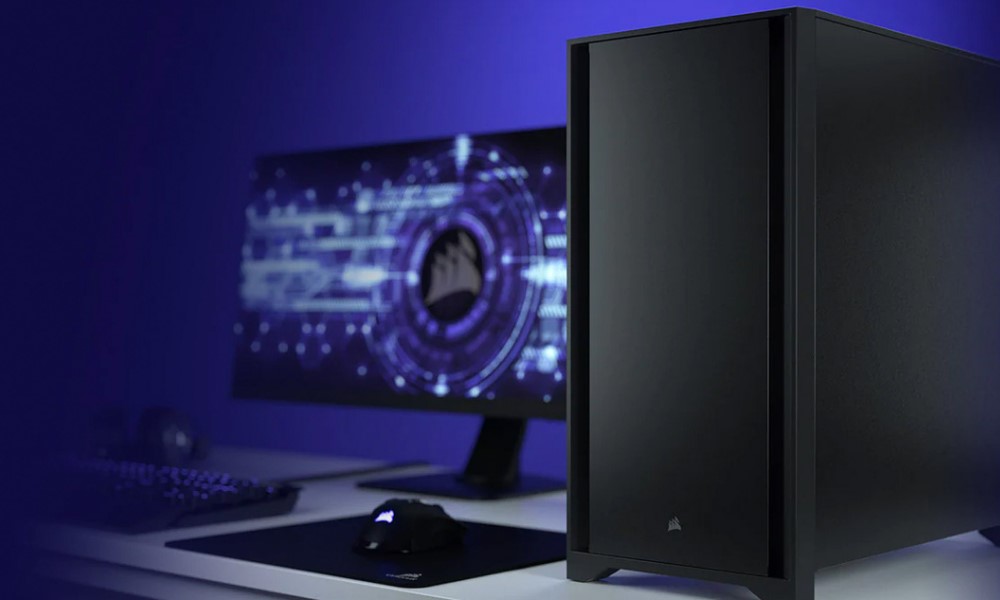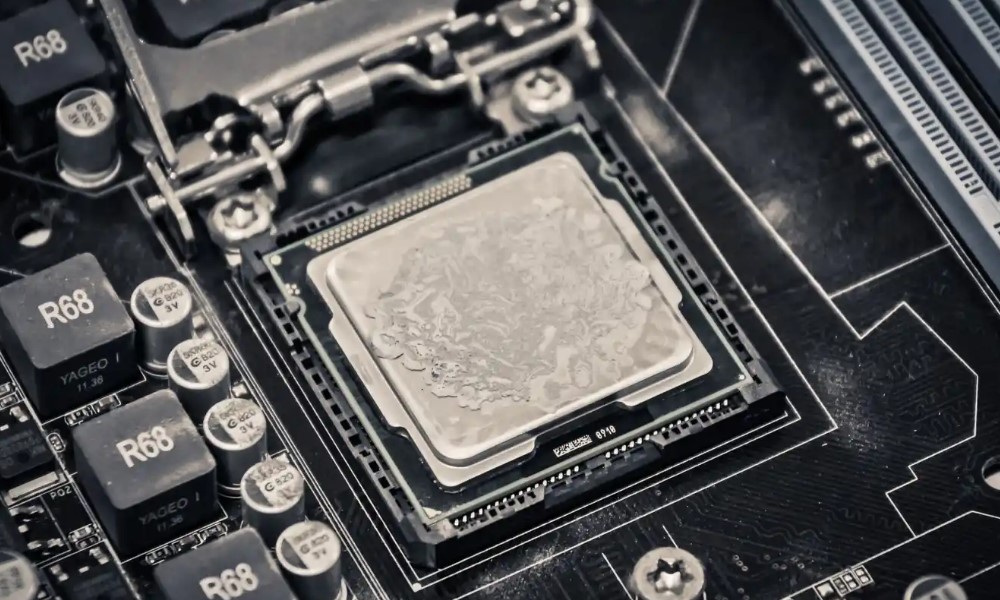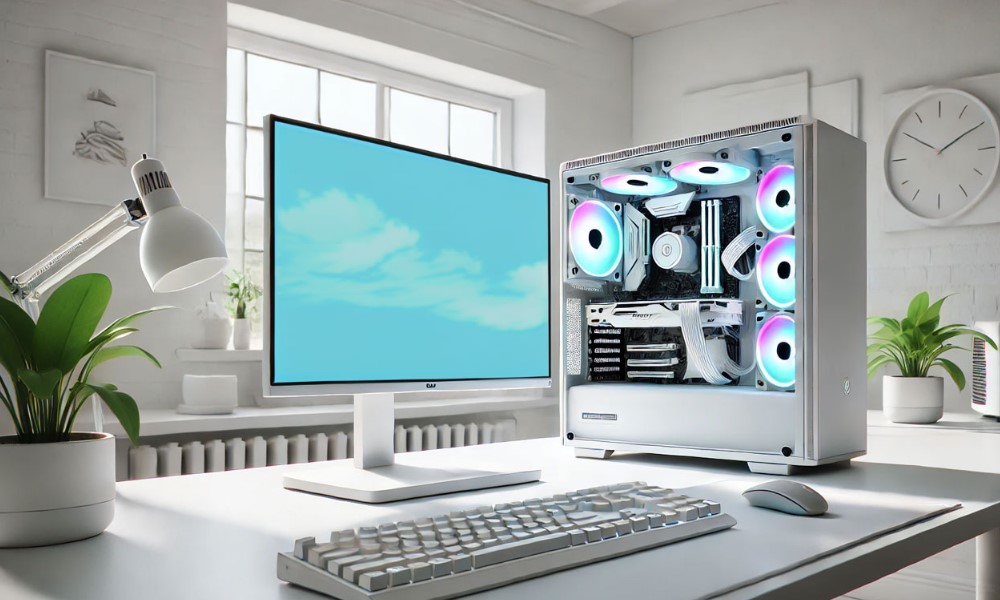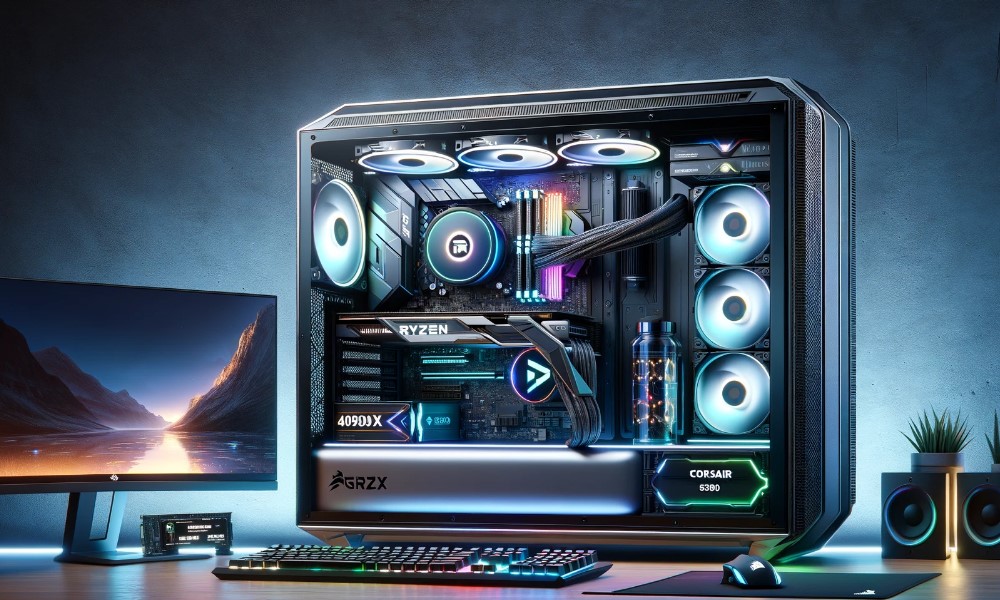PC Components for Building a High-Performance Computer
Building or upgrading a personal computer involves understanding the essential parts that make up the system. PC components are individual hardware pieces that collectively determine the performance and capabilities of your computer. These components serve specific purposes, from processing data to storing files, and contribute to tasks such as gaming, content creation, and general computing. In this guide, we’ll take a deeper dive into the most important PC components, exploring their features, benefits, and functions. Additionally, we’ll highlight some of the top products available in 2024, giving you insights into what to look for when purchasing each component.
Understanding PC Components

PC components are the individual hardware parts that work together to form a complete computer system. Each component plays a crucial role in the overall performance and functionality of your PC. The primary components include the CPU (Central Processing Unit), which processes instructions; the GPU (Graphics Processing Unit), responsible for rendering images and videos; and RAM (Random Access Memory), which allows the system to quickly access data for active tasks.
Storage devices like SSDs and HDDs are used to save data and software. The Motherboard connects all components, while the PSU (Power Supply Unit) provides power. Other essential components include cooling systems and peripherals. Understanding these parts and their functions is key when building or upgrading a PC to meet specific performance needs, such as gaming or productivity.
Key Features of PC Components
When building or upgrading a PC, it’s crucial to understand the key features of each component, as they influence your computer’s performance, speed, and overall functionality. Below, we’ll explore the essential features of the primary PC components, helping you make informed decisions for your system build.
1. CPU (Central Processing Unit)
The CPU is often referred to as the brain of the computer, and its performance is one of the most important factors in determining the speed of your system. Key features of CPUs include:
- Cores and Threads: Modern CPUs feature multiple cores (usually 4, 6, 8, or more) and threads. More cores and threads allow the CPU to handle multiple tasks simultaneously, which is crucial for multitasking and gaming.
- Clock Speed: Measured in GHz, the clock speed determines how quickly a CPU can process instructions. Higher clock speeds generally lead to better performance, particularly in tasks that require high computational power.
- Cache: CPUs come with different levels of cache memory (L1, L2, L3). A larger cache helps the CPU quickly access frequently used data, improving efficiency and reducing delays.
- Architecture: The architecture (e.g., Intel’s Alder Lake or AMD’s Zen) impacts power efficiency, processing power, and compatibility with other components.
2. GPU (Graphics Processing Unit)
The GPU is crucial for rendering images, videos, and animations, especially for gaming, video editing, and 3D rendering. Important features to consider include:
- VRAM (Video RAM): The amount of dedicated memory on a GPU. More VRAM allows for better performance in graphics-heavy tasks such as 4K gaming or rendering large files.
- CUDA Cores (NVIDIA) / Stream Processors (AMD): These are the cores responsible for handling parallel tasks such as rendering and calculations. The more cores, the better the GPU can handle complex tasks.
- Ray Tracing Support: Ray tracing is a rendering technique used for realistic lighting, shadows, and reflections in games. GPUs with ray tracing capabilities (e.g., NVIDIA RTX series) can significantly enhance visual quality.
- Clock Speed: Like the CPU, the GPU also has a clock speed, which affects its performance. A higher clock speed improves processing capabilities for gaming and rendering.
3. RAM (Random Access Memory)
RAM plays a critical role in enabling your system to handle multiple tasks simultaneously by temporarily storing data that the CPU can quickly access. Features to consider include:
- Capacity: More RAM (16GB or 32GB) allows for better multitasking and smoother operation, especially when running multiple applications or working with large files.
- Speed (Frequency): The speed of RAM, measured in MHz, impacts how quickly data is transferred to and from the CPU. Higher speeds result in faster performance, especially in gaming and video editing.
- Latency: Latency measures the time it takes for the RAM to respond to requests. Lower latency leads to better performance, particularly in high-performance tasks.
4. Storage: SSD vs HDD
Storage devices are critical for storing your data, operating system, and applications. There are two main types:
- SSD (Solid-State Drive): SSDs are much faster than traditional hard drives, offering quick boot times, fast data transfer, and reliable performance. Key features include high read and write speeds (measured in MB/s or GB/s) and durability (as they have no moving parts).
- HDD (Hard Disk Drive): HDDs offer larger storage capacities at lower prices but are slower than SSDs. They’re ideal for users who need mass storage without focusing on speed.
5. Motherboard
The motherboard connects all the components of your system. Key features to look for include:
- Chipset: The chipset determines the compatibility and performance of your CPU and RAM. Popular chipsets include Intel’s Z-series and AMD’s B-series.
- Expansion Slots: Motherboards come with PCIe slots for adding a GPU, sound cards, network cards, and other expansion devices.
- Form Factor: The size of the motherboard (e.g., ATX, Micro-ATX, or Mini-ITX) determines how many components can be added to the system. A larger form factor allows for more expansion options and additional ports.
6. Power Supply Unit (PSU)
The PSU provides power to the system. Key features include:
- Wattage: The PSU’s wattage rating determines how much power it can supply to the system. A higher wattage is required for systems with powerful GPUs or additional components.
- Efficiency Rating: PSUs come with efficiency ratings such as 80 Plus Bronze, Silver, Gold, or Platinum. A higher rating means less power waste and more efficient performance.
- Modularity: Modular PSUs allow you to attach only the cables you need, reducing cable clutter and improving airflow inside the case.
Core PC Components and Their Functions

Central Processing Unit (CPU): The Heart of Your Computer
The CPU, often referred to as the brain of the computer, is responsible for executing instructions from programs, operating systems, and applications. It handles complex calculations, decision-making, and data processing tasks. The performance of your CPU can significantly impact the overall speed and responsiveness of your system.
Modern CPUs are built with multiple cores, which allow them to handle various tasks simultaneously, improving multitasking capabilities. Clock speed, measured in gigahertz (GHz), is another key factor that determines how fast a CPU can process tasks. More advanced CPUs are also equipped with technologies like hyperthreading, which increases performance by allowing each core to manage two threads instead of just one.
Popular CPU Products:
- Intel Core i9-13900K
As one of Intel’s flagship processors, the Intel Core i9-13900K is designed for enthusiasts who demand high performance for gaming, content creation, and intensive applications. With 24 cores and 32 threads, it handles multitasking seamlessly, delivering incredible speed and responsiveness.- Pros: Exceptional performance, ideal for heavy multitasking, and highly efficient for gaming.
- Cons: Expensive, and requires significant cooling due to its power consumption.
- Price: Around $600. Available on Intel’s official website.
- AMD Ryzen 7 7800X3D
The AMD Ryzen 7 7800X3D is a great alternative for users looking for high-end performance at a relatively lower price than Intel’s Core i9 series. Known for its superior 3D V-Cache technology, it excels in gaming and high-demand workloads.- Pros: Excellent gaming performance, great value for money.
- Cons: Lacks overclocking potential compared to some Intel CPUs.
- Price: Around $450. Available on AMD’s official website.
- Intel Core i5-13600K
The Intel Core i5-13600K offers a balanced price-to-performance ratio. It is ideal for users who want solid gaming and general-purpose computing capabilities without breaking the bank. With 14 cores and 20 threads, it handles multitasking and gaming quite well.- Pros: Excellent value for its price, great performance for mainstream tasks.
- Cons: Not suitable for extremely demanding tasks like 4K gaming or heavy video editing.
- Price: Around $300. Available on Intel’s official website.
Graphics Processing Unit (GPU): Powering Your Visual Experience
The GPU, or graphics card, is responsible for rendering images and videos, which is especially important for gaming, 3D rendering, video editing, and other visually intensive tasks. GPUs come in two primary forms: integrated and dedicated. Integrated GPUs are built into the CPU, while dedicated GPUs are separate cards that offer superior performance.
Dedicated GPUs offer significantly better performance, with their own memory (VRAM), which is crucial for smooth gaming, rendering, and processing large datasets for professional applications.
Top GPU Products:
- NVIDIA GeForce RTX 4090
The NVIDIA GeForce RTX 4090 is the pinnacle of gaming and content creation performance. This GPU is equipped with NVIDIA’s latest Ada Lovelace architecture, offering unparalleled performance for 4K gaming and advanced ray tracing features.- Pros: Superior performance, ideal for 4K gaming, VR applications, and professional content creation.
- Cons: Extremely high cost, requires robust cooling, and has high power consumption.
- Price: Approx. $1,500. Available on NVIDIA’s official website.
- AMD Radeon RX 7900 XTX
The AMD Radeon RX 7900 XTX offers strong competition to NVIDIA’s high-end GPUs, delivering excellent performance at a more affordable price point. It’s perfect for gamers looking for high-quality visuals at a fraction of the cost of the RTX 4090.- Pros: Great performance for the price, good for 1440p and 4K gaming.
- Cons: Lacks some advanced ray tracing capabilities compared to NVIDIA.
- Price: Around $1,000. Available on AMD’s official website.
- NVIDIA GeForce RTX 3060 Ti
The RTX 3060 Ti is an excellent choice for those looking for a budget-friendly GPU that still offers great performance for 1080p and 1440p gaming. While it’s not the best option for 4K gaming, it provides outstanding value for mainstream gamers.- Pros: Affordable, great for 1080p/1440p gaming, good performance per dollar.
- Cons: Not ideal for ultra-high-end gaming at 4K.
- Price: Approx. $400. Available on NVIDIA’s official website.
Memory (RAM): Smooth Multitasking and Speed
Random Access Memory (RAM) is essential for multitasking and ensuring that your system runs smoothly. When your CPU is working on tasks, it temporarily stores the data in RAM, making it easily accessible for quick processing. The more RAM you have, the more tasks your computer can handle simultaneously without slowing down.
The ideal amount of RAM varies depending on your usage. For general use, 8GB to 16GB of RAM is sufficient. However, for gaming, video editing, and other memory-intensive tasks, 32GB or more is recommended.
Recommended RAM Products:
- Corsair Vengeance LPX 16GB (2 x 8GB) DDR4-3200
This Corsair Vengeance LPX kit offers a good balance of affordability and performance, making it perfect for users who need a reliable and cost-effective solution for general computing.- Pros: Affordable, reliable, easy to install.
- Cons: Not the fastest RAM available, but good for general use.
- Price: Approx. $70. Available on Corsair’s official website.
- G.SKILL Ripjaws V Series 32GB (2 x 16GB) DDR4-3600
The G.SKILL Ripjaws V Series is an excellent choice for high-performance computing tasks such as gaming, streaming, and content creation. With a 32GB capacity, it provides ample memory for demanding applications.- Pros: Fast speeds, large capacity, good for multitasking.
- Cons: Slightly more expensive than other options.
- Price: Approx. $140. Available on G.SKILL’s official website.
- Kingston Fury Beast 64GB (2 x 32GB) DDR5-5200
For users looking for next-gen performance, the Kingston Fury Beast DDR5 kit offers blazing-fast speeds and future-proofing for upcoming applications and games.- Pros: High speed, large capacity, excellent for high-end tasks.
- Cons: Expensive compared to DDR4 RAM.
- Price: Approx. $300. Available on Kingston’s official website.
Storage: Choosing the Right Drive for Speed and Capacity
Storage is one of the most critical components of a computer. It dictates how much data you can save and how quickly your system can access that data. The two primary storage options are Hard Disk Drives (HDDs) and Solid-State Drives (SSDs).
SSDs are much faster than HDDs because they use flash memory to store data, while HDDs rely on mechanical disks to read and write data. While SSDs are more expensive per gigabyte, they offer significantly better performance, making them ideal for the operating system, applications, and games.
Recommended Storage Products:
- Samsung 970 EVO Plus 1TB NVMe SSD
This high-speed SSD offers exceptional read and write speeds, making it perfect for users who need fast boot times and rapid file access.- Pros: Very fast, reliable, and durable.
- Cons: Higher price than traditional HDDs.
- Price: Approx. $90. Available on Samsung’s official website.
- Seagate Barracuda 2TB HDD
For users needing affordable bulk storage, the Seagate Barracuda HDD provides large capacities at an attractive price point. It’s perfect for storing media files, backups, and less demanding applications.- Pros: Affordable, great storage capacity.
- Cons: Slower than SSDs.
- Price: Approx. $60. Available on Seagate’s official website.
Power Supply Unit (PSU): Ensuring Stable Power
The Power Supply Unit (PSU) is an essential component in any computer build, converting electrical power from the outlet into a usable form for your system. The wattage rating of a PSU determines how much power your system can draw, and choosing an underpowered PSU can lead to system instability or crashes.
For most systems, a 600W to 750W PSU is sufficient. However, for systems with high-end GPUs, multiple storage devices, or overclocking, you may need a 1000W PSU or higher.
Recommended PC Components Products

- Corsair RM850x 850W 80+ Gold
This Corsair PSU delivers excellent efficiency and stable power, ideal for gaming and high-performance PCs.- Pros: Efficient, reliable, and quiet.
- Cons: Slightly higher price point.
- Price: Approx. $130. Available on Corsair’s official website.
- EVGA SuperNOVA 750 G5 750W 80+ Gold
The EVGA SuperNOVA 750 PSU is known for its excellent power efficiency and stability, making it a great choice for mid- to high-performance builds.- Pros: Compact, energy-efficient, high reliability.
- Cons: Higher price than basic options.
- Price: Approx. $100. Available on EVGA’s official website.
Conclusion
Understanding the different PC components and how they work together is vital when building a high-performance system. By selecting the right CPU, GPU, RAM, storage, and PSU, you can ensure your PC meets your needs, whether it’s for gaming, content creation, or general use.
Before purchasing, consider your specific needs and budget. Research each component to find the best options that align with your goals. Always prioritize quality and performance, as these parts are the foundation of your computer’s capabilities.
FAQs
- What are the most essential PC components for a gaming PC?
- The essential components for a gaming PC include a high-performance GPU, a powerful CPU, sufficient RAM (16GB or more), and a fast SSD for quick load times.
- How much RAM do I need for gaming?
- For most gaming setups, 16GB of RAM is sufficient. However, for more demanding titles or multitasking, 32GB may offer a smoother experience.
- Can I use a lower-wattage PSU for my high-performance system?
- It’s important to choose a PSU that can handle the total wattage of all your components. For a high-performance build, 750W to 1000W is typically recommended, but for a low-demand system, 600W may suffice.






